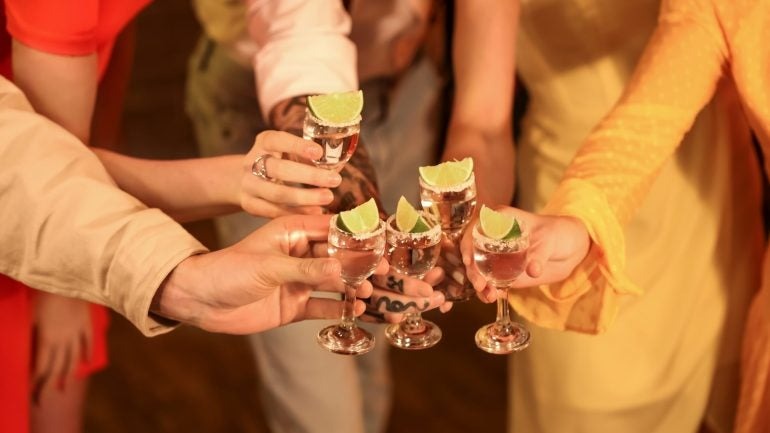Comment
Why the outlook for Tequila isn’t as gloomy as some might think
Slowing US demand and small markets overseas have led to pessimism about the outlook for Tequila – but there are reasons to be positive. Richard Woodard reports.

Credit: Pixel-Shot / Shutterstock
Glance at the headlines towards the end of last year and you might be forgiven for thinking the Tequila category was facing the apocalypse in the early months of 2025. Bloated inventory levels, soft demand in the monolithic US market, celebrity Tequila fatigue, the Trump tariff threat… one of the few bright spots in beverage alcohol, it seemed, had lost its lustre pretty much overnight.
And it’s true to say agave spirits are facing challenges at the moment – challenges made only more difficult by the industry’s action, or rather inaction. Everybody knew Tequila was way too reliant on the US market and that, sooner or later, that imbalance would come to bite the category on its posterior. The reckoning has simply occurred rather more quickly than many had predicted (or hoped).
The collective failure to successfully diversify Tequila’s global footprint is human nature writ large: why bother going to the trouble and expense of building category awareness and sales in tricky overseas markets when the rewards Stateside are so immediate and so lucrative? The answer, so glaringly obvious in the current trading environment, is that such investments would have acted as a partial hedge against the end of the US Tequila boom.
That’s the glass-half-empty view, anyway. But take a step back for a moment, and the fortunes of the Tequila category perhaps don’t look quite so gloomy after all. It’s not so much that agave isn’t in demand outside North America; it’s just that this pales in comparison with the remarkable success story of the past 25 years in the US: since the turn of the millennium, the category has quadrupled in size.
The Tequila category’s growth rates in Europe, Asia Pacific, Africa and the Middle East over the past five years are every bit as dizzying as some of the numbers recorded in the US over the same timescale – it’s just that the base in these parts of the world is so much smaller. The demand is there but brand owners will have to pursue a more nuanced local strategy to take advantage of it.
Price is one key element here. Even without the current pressure on disposable incomes, consumers in Europe and Asia might well bridle at some of the prices demanded by super-premium Tequila brands. The luxury Tequila segment exploded in the US only once the category was firmly established in the consumer’s mind – the UK, France, Spain, China and Australia are nowhere near that inflection point yet.
Growing Tequila on a significant scale outside North America will be demanding. But it will come, if companies make it a priority.
Better to focus on premium, 100% agave products instead, show what Tequila can do for cocktails/mixed drinks, then gradually introduce the idea of serious, sipping añejo and extra añejo products. The exception to this particular rule is the very top end: ultra-premium products that focus on particular cities – even individual bars/hotels – and a consumer well-heeled enough to be immune to the cost of living crisis.
Consumption occasions will vary by country and region. The Margarita remains Tequila’s most obvious weapon of choice but the Paloma’s bitter edge makes it a potential winner in markets such as Italy and Greece. In more sophisticated cocktail markets, twists on Martinis, Negronis and Old Fashioneds can resonate. Younger consumers in India and China are increasingly buying into agave’s mixable credentials but shots still rule the roost in Africa and Latin America. Recognising these regional variations will be crucial to building the category on a global scale.
That’s true of recruitment, too. Here, Tequila has an increasingly diverse arsenal at its disposal, from the core blanco offer to flavours, liqueurs and ready-to-drink and ready-to-serve products. For more risk-averse consumers, these can be more approachable in terms of both flavour and abv, acting as a gateway to more ‘authentic’, 100% agave Tequilas.
Growing Tequila on a significant scale outside North America will be demanding: it will take time, and a multi-stranded, diverse brand strategy that focuses on what the local consumers in any given market want from the category. But there’s every sign it will come, if companies make it a priority – which, in the current trading environment, they surely will.
And what of the Tequila category in the US? Well, the days of double- or even triple-digit growth may be behind us now but there’s still plenty of potential, too. Let’s not forget that, towards the end of 2024, there were still indications of limited category growth; meanwhile, the top end – ultra-premium and above – is still looking pretty bullish.
The reaction of brand owners during 2025 will be interesting to observe. As demand softens and inventories swell, prices have already started to drift downwards for category darlings such as Patrón and Casamigos. Factor in plummeting agave prices – reported to be as low as two Mexican pesos ($0.10) per kg on the spot market – and you have an obvious recipe for price wars as brands battle to cling on to market share.
After years – decades – of injecting value into the Tequila category, such moves might look wrongheaded or even self-destructive but, like it or not, that’s the market reality in 2025. Anyway, I don’t think anyone should shed too many tears for brand owners – after all, they’ve had a pretty good time of it over the past 20 years or so.
Furthermore, if the Tequila category emerges from this particular corrective phase as more mature and more geographically diverse – which it surely will – then that can only augur well for its future, however difficult its short-term growing pains might prove.